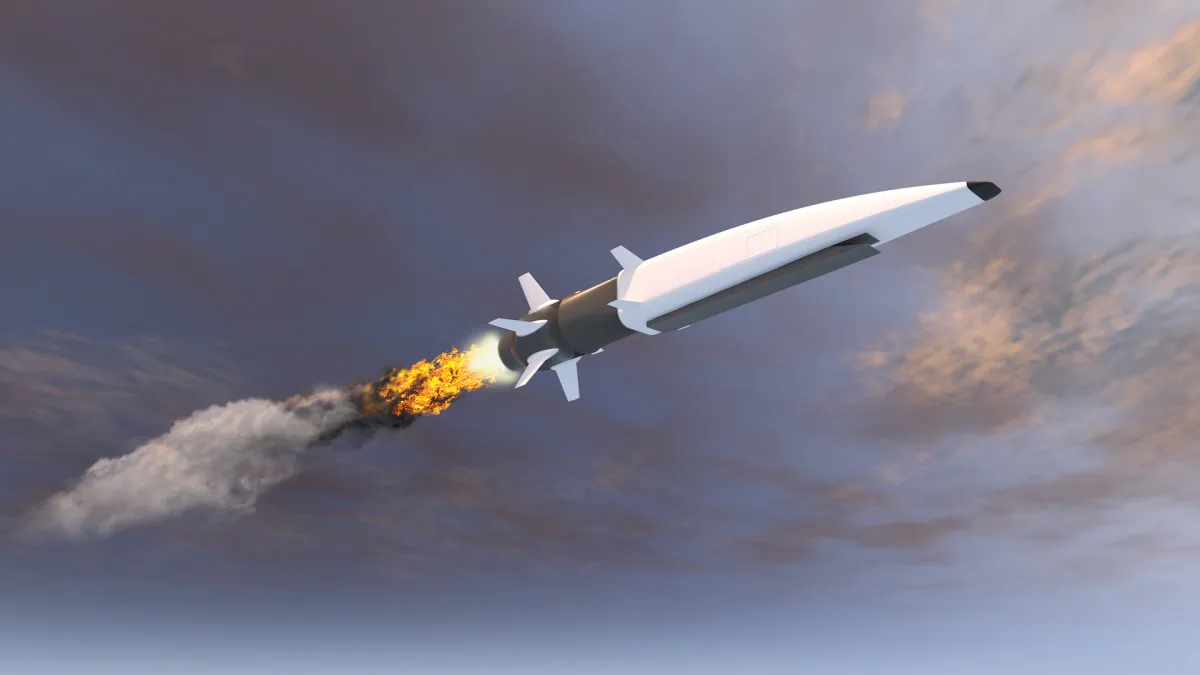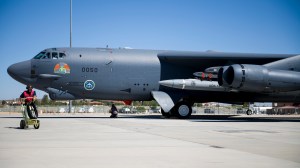Navy requesting big boost in funding for HALO air-launched ‘hypersonic’ missile

The Navy is planning for much higher investments in its Offensive Anti-Surface Warfare (OASuW) Weapon Increment II program in the coming years compared to previous projections, according to newly released budget justification documents.
The next-generation missile, also known as the hypersonic air-launched OASuW (HALO), is intended to be carried by aircraft carrier-based fighter jets such as the Super Hornet with the capability of sinking enemy ships.
The technology will include “a carrier-suitable, higher-speed, longer-range, air-launched weapon system providing superior Anti-Surface Warfare capabilities” that will “address advanced threats from engagement distances that allow the Navy to operate in, and control, contested battle space in littoral waters and Anti-Access/Area Denial (A2/AD) environments,” per the new budget justification books.
Although the name of the weapon suggests it will be hypersonic, it might not actually cross that threshold and meet the traditional definition of that term with regard to velocity, according to the Navy’s program executive officer for unmanned aviation and strike weapons.
“From a speed perspective, the hypersonics is a little bit of a misnomer [for HALO]. We’re not actually that concerned about Mach 5. It’s about distance and time — can I close the range that we want as quickly as possible … It’s going to be probably in the high Mach 4-plus category as far as its peak speed. But we’re really focused on, can I close distance at speed, potentially, to the point where [in-flight target update] is not required,” Rear Adm. Stephen Tedford said during a briefing at last year’s Sea-Air-Space conference hosted by the Navy League.
The service is requesting $179 million in fiscal 2025 for research, development, test and evaluation funding for the project — much more than the $99 million that previous budget plans anticipated.
The Navy is also planning to spend $197 million in fiscal 2026, $177 million in 2027, $167 million in 2028 and $147 million in 2029 on RDT&E for the initiative.
By comparison, spending projections released last year anticipated $83 million in 2026, $85 million in 2027 and $86 million in 2028 for RDT&E of HALO. Funding projections for fiscal 2029 were not included in the budget justification documents released last year because they fell outside the five-year planning period covered by those books.
In order to counter evolving “near-peer” threats, HALO has been “accelerated” to achieve early operational capability in fiscal 2029, according to the new justification documents. The Navy requested $96 million for the program in fiscal 2024. The increase proposed for 2025 would support a transition from a middle-tier acquisition program to a major capability acquisition effort at Milestone B.
“This transition will allow for Early Operational Capability (EOC) in FY 2029,” per the justification books.
Naval Air Systems Command previously awarded two contracts to Raytheon Missiles and Defense and Lockheed Martin in 2023, with a total value of $116 million, for initial development work on the HALO technology.
An engineering and manufacturing development contract is scheduled to be awarded in fiscal 2025, according to the justification documents. Subsystem critical design reviews, the process of acquiring long lead material, and qualification test events are also expected to begin.
A Milestone C production decision is expected in fiscal 2027.
The new budget justification books include a line item that appears to indicate planned procurement funding for HALO beginning in fiscal 2027. Projected funding under that line item includes $59 million in 2027, $98 million in 2028 and $157 million in 2029.






